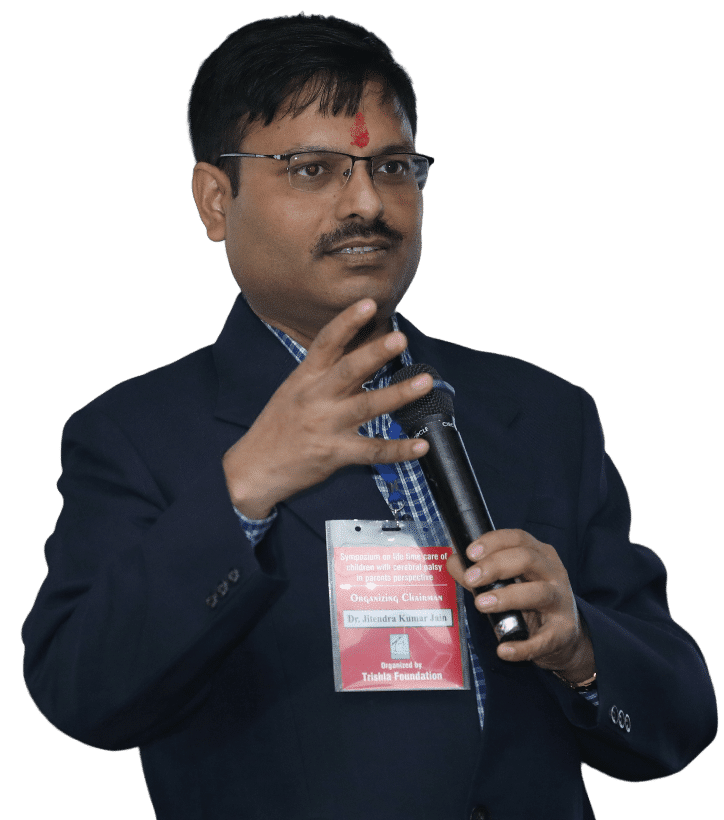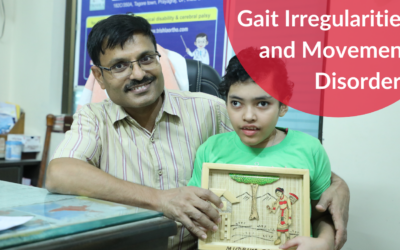Diplegia Spastic Cerebral Palsy
Releted Posts
Cerebral Palsy
Cerebral Palsy Types
Cerebral Palsy Myths
Cerebral Palsy Surgery In India
Cerebral Palsy Children
Cerebral Palsy Defination
Cerebral Palsy Care Plan
Cerebral Palsy Prognosis
Cerebral Palsy Symptoms
Cerebral Palsy Treatment
Cerebral Palsy Therapy
Cerebral Palsy Organizations
Cerebral Palsy Living Style
Cerebral Palsy Birth Injury
Cerebral Palsy Associated Disorder
Cerebral Palsy Eating Feeding Tips
Cerebral Palsy Sleeping Disorder
Diplegia Spastic Cerebral Palsy
Spastic Cerebral Palsy
Yoga & Physiotherapy
Donate Now
Your one donation can give someone a new life
Diplegia spastic cerebral palsy
is one of the types of spastic cerebral palsy. In this form of cerebral palsy mostly both lower limb is affected but some time upper limb may also be affected. In the spastic variety, muscles are spastic and stiff. It is caused because of some injuries or damages in the brain.
In several cases, it is difficult to know that when these damages may occur, before or during the birth of a child. Premature and very low birth weight baby is more prone to develop spastic cerebral palsy. Known causes of brain insult are birth asphyxia, drug intoxication, encephalitis, trauma, genetic causes, etc.
However, there are conditions in which cerebral palsy is gotten after birth in view of medicinal misbehavior during the delivery of child work. In most cases, diplegia spastic cerebral palsy occurs due to lack of oxygen, infection of the mother to child during pregnancy, and other injuries in the brain for example Hematoma, which happens during complications during delivery.
The parent of the CP child can consult with the specialist and can take action for better cerebral palsy treatment and also consult with a legal advisor to be compensated for medical costs when the condition occurs in a child due to medical malpractice.
The child with Spastic cerebral palsy present at a very early age. The child will have difficulty in crawling, kneeling & walk. They can also have toe-walking, crouching, and scissoring.
The upper limb can have little functional disability. These children will also have associated problems like problems in coordination, balance, seizures, joint contracture & cognitive impairments, etc. these children will be delayed in every milestone.
Symptoms Of Diplegia Spastic Cerebral Palsy:
There are many symptoms for CP which vary from child to child and depend upon the condition of the child. But still, there are few common cerebral palsy symptoms that are seen in CP patients for example muscle is tight.
This condition is known as hypertonia and it affects the upper as well as lower limbs of the body including hands and legs.
A CP child may show the following diplegia spastic cerebral palsy symptoms:
- Unable to Control balance
- Joints deformity
- Muscles become tight and shorten
- The child prefers to sit in the ‘W’ position
- The problem in speaking, crawling, kneeling, and walking
- Poor control of neck and back
- Delay in physical development
- Eye movement improper
- The functional problem in upper limb
If the child shows any of the signs and symptoms mentioned above then needs a consult with the cerebral palsy physician. There are few test and scans such as EEG, CT and MRI scans will help in cerebral palsy diagnosis.
Does Your Child Is Suffering From Spastic Diplegia Cerebral Palsy?
If your child is suffering from such a problem and you are looking for the best cerebral palsy treatment or if you have any query regarding cerebral palsy, orthopedic and other similar disability problems then contact us.
Check the Successs Story of Anvi Affected with Diplegic Spastic Cerebral Plasy – Check Video
Diplegia Spastic Cerebral Palsy Treatment:
Spastic diplegia cerebral palsy does not have any complete cure but the management in the condition of spastic CP is possible.
Treatment is based on the grade of disability, the severity of spasticity, contracture, deformity, functional activities, and age of the child.
- Early identification and early intervention is the key to success. In very small kids, we prefer to train parents in a home-based therapy program which include play activities with the child and promoting early milestone.
- Physical therapy helps to make their muscles flexible and increase the range of movement or motions. Occupational therapy helps to make them more independent. Speech therapy is being used to improve speech problems. Oropharyngeal exercises to improve deglutition and for treatment of dribbling of saliva. We should focus more on activity-oriented therapy along with training in ADL.
- Brace including AFO and Gaiter is required for the lower limb.
- Sometimes Botulinum toxin is being used to reduce the spasticity of muscles. But it is being used in children from 2-6 years of age with moderate to severe spasticity. Most of the time plaster will also be given during this injection.
- Cerebral palsy orthopedic surgery is needed once the child develops contracture of muscle, fix joint deformity, and bony torsional deformity. It is usually delayed beyond 7 years of age except for cases with hip dislocation and adductor contracture.
- These children also need assistive walking devices like a stick, elbow crutches, and rollator. Wheelchair needed only in very severe disability.
- These cerebral palsy treatments are not only helpful in spastic diplegia cerebral palsy. It is also helpful in spastic hemiplegia, spastic triplegia, spastic monoplegia, and other CP.
- Mild to moderately affected diplegic spastic cerebral palsy will have a nearly normal life span as the general population and more than 80% will have the ambulatory capability with or without little assistive devices.
Watch Our Success Stories
Cerebral palsy is a lifelong condition that affects individuals from infancy, presenting multiple challenges. As a parent & specialist, it's essential to have comprehensive information to navigate this journey.
Subscribe to our YouTube channel to access: Educational videos, Real-life case reports, Inspiring success stories
Stay informed, stay empowered!
Page Medically Reviewed and Edited by
DR. Jitendra Kumar Jain
Dr. Jitendra Kumar Jain is a renowned name in the field of childhood physical disability & orthopedics problems in North India. He has been an MS Orthopedics, DNB Orthopedics, Pediatric orthopedic surgeon & cerebral palsy specialist for over 21 years.


Page Medically Reviewed and Edited by DR. JITENDRA KUMAR JAIN
Dr. Jitendra Kumar Jain is a renowned name in the field of childhood physical disability & orthopedics problems in North India. He has been an MS Orthopedics, DNB Orthopedics, Pediatric orthopedic surgeon & cerebral palsy specialist for over 21 years.
Testimonials
Make a Difference
Support Trishla Foundation's Life-Changing Work for Children with Cerebral Palsy!
Together, we can break barriers and empower children with cerebral palsy. With your generous contribution, Trishla Foundation can continue its vital work in providing therapies, education, and support to these incredible children. Help us create a brighter future by donating today!



